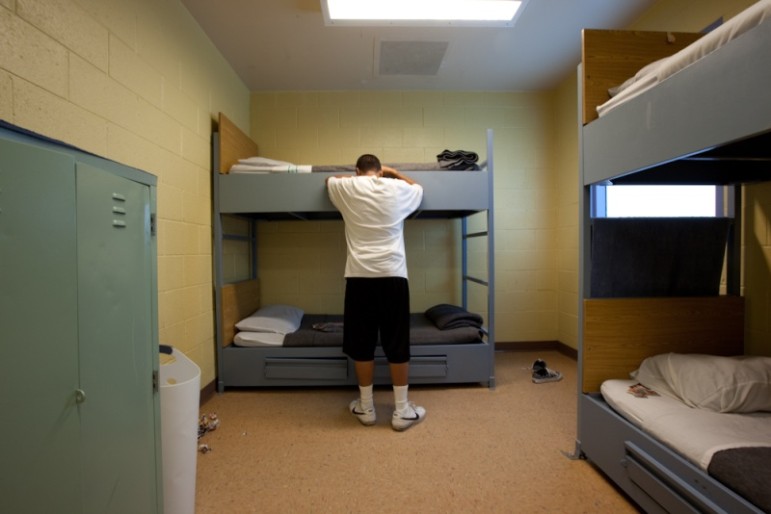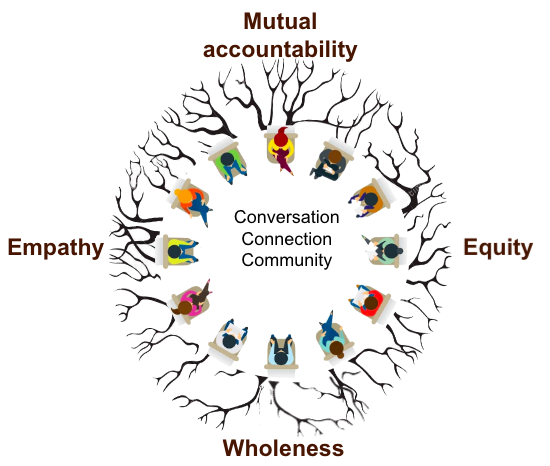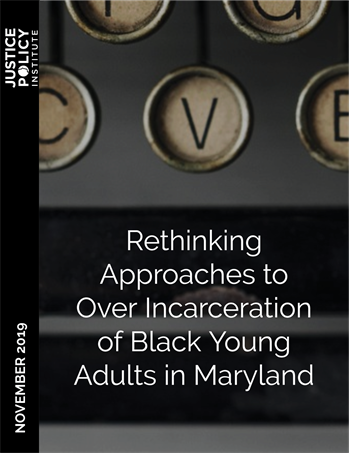Table of Contents
- The Problem with Traditional Juvenile Incarceration
- Recidivism
- Trauma and Negative Outcomes
- Ineffective Deterrence
- Disproportionate Impact
- Juvenile Justice Reforms: A Paradigm Shift
- Diversion Programs
- Restorative Justice
- Community-Based Alternatives
- Mental Health and Counseling Services
- Education and Skill Development
- Raise the Age Laws
- Data-Driven Decision-Making
The United States, like many other countries, has grappled with the issue of juvenile justice for years. In the past, the approach to dealing with young offenders often involved incarceration and punitive measures. However, a growing body of research and evolving societal perspectives have led to a reevaluation of these practices. This article explores the imperative need for juvenile justice reforms, emphasizing a shift away from incarceration toward more rehabilitative and restorative approaches for young offenders.
The reevaluation of juvenile justice practices in the United States represents a pivotal moment in the evolution of the criminal justice system. As we continue to learn more about the unique needs and vulnerabilities of young offenders, there is a growing consensus that punitive measures and incarceration may not be the most effective or just approach. Instead, a shift toward rehabilitative and restorative justice is becoming increasingly imperative for several reasons:
Brain Development: Scientific research has shown that the adolescent brain is still developing, particularly the parts responsible for impulse control, decision-making, and judgment. Recognizing this, the justice system is beginning to acknowledge that young offenders may not fully comprehend the consequences of their actions. Therefore, the focus should be on rehabilitation rather than harsh punishment.
Recidivism Rates: Traditional punitive measures have often failed to address the root causes of juvenile delinquency, resulting in high rates of recidivism. By emphasizing rehabilitation, the juvenile justice system can provide young offenders with the tools and resources they need to break the cycle of criminal behavior and reintegrate successfully into society.
Individualized Treatment: Young offenders come from diverse backgrounds and face a wide range of challenges, including trauma, substance abuse, and mental health issues. Rehabilitative approaches recognize the importance of individualized treatment plans that address these specific needs, offering counseling, therapy, and support services.
Restorative Justice: Restorative justice practices focus on repairing the harm caused by the offense, involving both the offender and the victim in the resolution process. This approach promotes empathy, accountability, and a sense of responsibility among young offenders, encouraging them to make amends and learn from their mistakes.
Community-Based Alternatives: Rather than resorting to incarceration, which can further disconnect young offenders from their communities, alternative programs like diversion, mentorship, and community service provide opportunities for rehabilitation while allowing them to remain connected to their families and support networks.
Education and Skill Development: Educational and vocational programs in juvenile facilities can equip young offenders with essential life skills and improve their future prospects. A focus on education helps break the cycle of delinquency and sets the stage for a productive adulthood.
Collaboration with Social Services: Recognizing that many young offenders face complex social issues, the juvenile justice system is increasingly collaborating with social service agencies to provide comprehensive support. This includes access to housing, substance abuse treatment, mental health services, and family counseling.
Reducing Racial Disparities: Juvenile justice reforms aim to address the racial disparities that have long plagued the system. By promoting fairness and equity, these reforms seek to eliminate biases and ensure that young offenders from all backgrounds receive equitable treatment and opportunities for rehabilitation.
International Best Practices: Many countries around the world have successfully implemented rehabilitative and restorative approaches in their juvenile justice systems. Learning from international best practices can inform the reform efforts in the United States and help develop more effective strategies.
Long-Term Benefits: Investing in the rehabilitation and successful reintegration of young offenders not only benefits individuals but also society at large. By helping young people avoid a life of crime, these reforms can lead to safer communities, reduced costs, and a more hopeful future for all.
In conclusion, the imperative need for juvenile justice reforms in the United States reflects a broader shift toward more humane, evidence-based, and effective approaches to addressing the needs of young offenders. By prioritizing rehabilitation and restorative justice, we can help young individuals navigate the challenges they face, learn from their mistakes, and ultimately become responsible and productive members of society. This approach aligns with evolving societal perspectives and advances the goal of creating a fair and just juvenile justice system.
Should you desire more in-depth information, it’s available for your perusal on this page: Rethinking the Connection Between Developmental Science and …
The Problem with Traditional Juvenile Incarceration
For decades, juvenile justice systems relied heavily on incarceration as a means of dealing with young offenders. However, this approach has been marred by numerous issues:
Expanding on the historical reliance on juvenile incarceration, it is essential to recognize the profound impact this approach has had on the lives of young offenders and the broader society. While it was once considered the default method for addressing juvenile delinquency, several critical issues have emerged over the years, underscoring the need for a shift in our approach:
Lost Opportunities for Rehabilitation: Traditional juvenile incarceration often functioned as a punitive measure rather than a rehabilitative one. Young offenders, who are still in the formative stages of their lives, missed out on opportunities for personal growth, education, and skill development that could have helped them redirect their lives onto a more positive path.
Cycle of Recidivism: The punitive nature of juvenile incarceration often contributed to a cycle of recidivism. Young offenders who were incarcerated frequently found themselves ill-prepared for reintegration into society upon release, leading to a return to criminal activities due to a lack of support, education, and job opportunities.
Psychological and Emotional Impact: Detention centers and juvenile correctional facilities have been shown to have detrimental psychological and emotional effects on young offenders. Isolation, exposure to violence, and the loss of family and community connections can lead to trauma, anxiety, depression, and an increased risk of mental health disorders.
Ineffective Deterrence: Research indicates that juvenile offenders are often not deterred by the threat of incarceration. In some cases, it can even act as a rite of passage or a badge of honor among peers, further perpetuating a culture of criminality.
Disproportionate Impact: Traditional juvenile justice systems have disproportionately affected marginalized communities, particularly youth of color. This has raised significant concerns about racial bias and systemic inequities, emphasizing the need for reform that ensures fairness and equity in the treatment of young offenders.
Financial and Societal Costs: The financial burden of maintaining juvenile incarceration facilities is substantial. Taxpayer dollars spent on detention and imprisonment could be redirected toward more effective and sustainable alternatives that prioritize prevention and rehabilitation.
Evolving Understandings of Adolescent Development: Over time, our understanding of adolescent development has evolved. Research in fields such as neuroscience and psychology has highlighted the unique characteristics of the adolescent brain, emphasizing impulsivity, susceptibility to peer influence, and the potential for change. This understanding challenges the wisdom of treating young offenders as if they were fully mature adults.
In summary, the historical reliance on juvenile incarceration has revealed numerous shortcomings and ethical concerns. To address these issues, a paradigm shift is needed in the juvenile justice system. Emphasizing rehabilitation, diversion, and community-based alternatives can provide young offenders with the support and resources necessary to reintegrate into society as responsible and productive individuals. It is essential to recognize the potential for growth and change in young lives and invest in evidence-based strategies that offer them a brighter future while simultaneously enhancing public safety.
To delve further into this matter, we encourage you to check out the additional resources provided here: Diversion | Center for Justice Innovation

Recidivism
Traditional juvenile incarceration often failed to address the underlying causes of delinquent behavior, resulting in high rates of recidivism. Young offenders released from detention centers frequently returned to a life of crime.
The historical shortcomings of traditional juvenile incarceration underscore the pressing need for a more effective and rehabilitative approach to addressing delinquent behavior in young offenders. Expanding upon this idea, we can delve into the reasons behind the failure of traditional juvenile incarceration and explore alternative methods aimed at breaking the cycle of recidivism:
Lack of Rehabilitation Focus: Traditional juvenile incarceration often prioritized punitive measures over rehabilitation. Young offenders were placed in detention centers where the primary focus was on punishment, leading to a missed opportunity to address the root causes of their delinquent behavior.
Inadequate Educational and Vocational Programs: Many juvenile detention centers lacked comprehensive educational and vocational programs. Instead of providing opportunities for academic growth and skill development, these facilities often left young offenders without the tools they needed to build a better future.
Negative Peer Influence: Juvenile detention centers brought young offenders into close proximity with peers who had committed similar offenses, which sometimes exacerbated their criminal tendencies. The influence of these negative peer groups could reinforce delinquent behavior, making it more likely for young offenders to return to a life of crime upon release.
Limited Access to Mental Health Services: A significant proportion of young offenders have underlying mental health issues or trauma that contribute to their delinquent behavior. Traditional incarceration systems often failed to provide adequate mental health services, leaving these issues unaddressed and increasing the likelihood of recidivism.
Family Disruption: Placing juveniles in detention centers could disrupt family relationships and support systems. This separation from positive family influences might contribute to a lack of stability and hinder successful reintegration into society after release.
Stigmatization: Young offenders released from traditional detention centers often faced stigmatization, making it difficult to secure housing, education, and employment opportunities. This societal rejection could push them back into criminal activities as they saw limited alternative options.
Limited Preparation for Reentry: Many young offenders were released from detention centers without adequate preparation for reentry into society. This lack of planning and support often set them up for failure in the outside world, increasing the risk of recidivism.
To address these shortcomings and reduce recidivism rates, alternative approaches have gained prominence in recent years:
Restorative Justice Programs: Restorative justice focuses on repairing the harm caused by delinquent behavior. It involves mediation between victims and offenders, encouraging accountability, empathy, and restitution. This approach helps young offenders understand the consequences of their actions and provides opportunities for making amends.
Community-Based Programs: Many jurisdictions have shifted towards community-based programs that allow young offenders to remain in their communities while receiving appropriate services and supervision. These programs aim to keep families intact, provide support, and facilitate reintegration.
Education and Skill Building: Alternative approaches prioritize education and skill-building programs to help young offenders acquire the tools they need for a brighter future. This includes access to quality education, vocational training, and job placement services.
Mental Health and Trauma-Informed Care: Recognizing the high prevalence of mental health issues among young offenders, alternative programs prioritize mental health services and trauma-informed care. This approach helps address the underlying issues that contribute to delinquent behavior.
Family Engagement: Engaging families in the rehabilitation process is crucial. Alternative programs work to strengthen family bonds, provide parenting support, and involve families in the planning and supervision of young offenders.
Reentry Planning: Preparing young offenders for reentry into society is a central focus of alternative approaches. This includes creating comprehensive reentry plans that address housing, education, employment, and ongoing support.
In conclusion, the failures of traditional juvenile incarceration have prompted a paradigm shift towards more rehabilitative and community-centered approaches. By addressing the underlying causes of delinquent behavior, providing education and skill-building opportunities, offering mental health support, and involving families in the process, these alternative methods aim to break the cycle of recidivism and offer young offenders a chance at a better future.
Should you desire more in-depth information, it’s available for your perusal on this page: 2 Historical Context | Reforming Juvenile Justice: A Developmental …

Trauma and Negative Outcomes
Incarceration can exacerbate existing trauma or create new psychological and emotional issues in young offenders. This environment, coupled with exposure to more experienced delinquent peers, can lead to further criminalization rather than rehabilitation.
The impact of incarceration on young offenders, especially those who are already vulnerable or have experienced trauma, cannot be underestimated. Instead of serving as a rehabilitative space, the correctional environment can exacerbate existing psychological and emotional issues and even contribute to a cycle of criminalization. To address this pressing issue effectively, it is essential to recognize the complex dynamics at play and implement strategies that prioritize the well-being and rehabilitation of young offenders.
Trauma-Informed Care: Young offenders often carry significant trauma with them into the justice system. Trauma-informed care is a framework that recognizes the role of trauma in shaping behavior and focuses on creating a safe and supportive environment for healing. Incorporating trauma-informed practices within correctional facilities can help address the underlying issues that contribute to criminal behavior.
Mental Health Services: Many young offenders struggle with mental health challenges, which can be exacerbated by the stress and isolation of incarceration. Ensuring access to mental health services within the juvenile justice system is crucial. These services should be culturally sensitive and age-appropriate, providing young offenders with the tools to manage their emotional well-being.
Educational and Vocational Programs: Educational and vocational programs within correctional facilities offer young offenders opportunities for personal growth and skill development. By acquiring education and job training, they can increase their chances of finding employment upon release, reducing the risk of returning to criminal activity.
Positive Peer Influences: The presence of more experienced delinquent peers can be a negative influence on young offenders. Implementing programs that promote positive peer relationships and mentorship can counteract this effect. Peer support groups and role models within correctional facilities can help young individuals develop healthier social connections.
Recreation and Physical Activity: Physical health and recreation play a crucial role in emotional well-being. Providing access to regular physical activity and recreational opportunities can help young offenders manage stress, anxiety, and anger constructively.
Family Involvement: Maintaining family connections is essential for young offenders’ emotional well-being and rehabilitation. Efforts should be made to involve families in the rehabilitation process, providing support and guidance both during incarceration and upon release.
Restorative Justice: Restorative justice programs emphasize accountability, empathy, and reconciliation. These programs allow young offenders to take responsibility for their actions, make amends to victims and the community, and develop a deeper understanding of the consequences of their behavior.
Community-Based Alternatives: In some cases, community-based alternatives to incarceration can be more effective in addressing the needs of young offenders. These alternatives, such as diversion programs and restorative justice initiatives, prioritize rehabilitation over punishment.
Reentry Planning: Preparing young offenders for successful reentry into their communities is crucial. This includes creating a reentry plan that addresses their educational, employment, housing, and mental health needs. Community-based organizations and support networks can play a vital role in this process.
Policy and Systemic Changes: Addressing the criminalization of young offenders requires systemic changes within the juvenile justice system. Reforming policies related to sentencing, parole, and probation can lead to more rehabilitative outcomes and reduced recidivism.
In sum, it is imperative to recognize that young offenders are in a formative stage of life where intervention and support can make a significant difference. Rather than perpetuating a cycle of criminalization, the correctional system should prioritize rehabilitation, address trauma and mental health needs, and provide opportunities for personal growth. By doing so, we can help young offenders reintegrate into society as responsible and productive citizens, breaking the cycle of crime and incarceration.
Looking for more insights? You’ll find them right here in our extended coverage: Bridging Research and Practice in Juvenile Probation | Urban Institute

Ineffective Deterrence
Research has shown that the threat of incarceration does not effectively deter juvenile offenders. Instead, it tends to reinforce a cycle of criminal behavior due to the lack of meaningful alternatives.
Research has unequivocally demonstrated that the threat of incarceration is an ineffective deterrent for juvenile offenders. In fact, this approach often backfires, exacerbating the cycle of criminal behavior due to the absence of meaningful alternatives. This issue calls for a reevaluation of our approach to juvenile justice.
Ineffectiveness of Deterrence: Numerous studies have shown that juvenile offenders, often facing challenging life circumstances, do not respond significantly to the threat of incarceration as a deterrent. This is because many of them are influenced by immediate, short-term considerations and lack the ability to fully grasp the consequences of their actions. The fear of incarceration may not outweigh these immediate pressures and influences.
Reinforcing Criminal Behavior: Placing juveniles in detention facilities exposes them to an environment where they can come into contact with more experienced and hardened criminals. This exposure can serve as a breeding ground for the reinforcement of criminal behavior and the acquisition of new, more serious criminal skills. In essence, it becomes a “school” for crime.
Lack of Rehabilitation: Many juvenile detention centers lack the necessary resources and programs for rehabilitation and education. Instead of addressing the underlying issues that led to the criminal behavior, these facilities often focus on punishment, which can exacerbate existing problems and lead to a continuation of criminal activities upon release.
High Recidivism Rates: The punitive approach to juvenile justice often results in high recidivism rates. Youth who have been incarcerated are more likely to reoffend and become entangled in the criminal justice system as adults. This not only harms the individuals but also places a substantial burden on society in terms of increased crime rates and the cost of maintaining detention facilities.
Missed Opportunities for Intervention: The period of adolescence is a critical time for intervention and redirection. Instead of focusing on punitive measures, society should prioritize providing juvenile offenders with access to education, mental health support, and social services that can address the underlying causes of their criminal behavior. Early intervention can break the cycle of criminality and prevent a lifetime of involvement in the criminal justice system.
Alternative Approaches: Several alternative approaches have proven effective in reducing juvenile delinquency. These include diversion programs, community-based rehabilitation, restorative justice practices, and mentoring initiatives. These approaches recognize the potential for rehabilitation and reintegration into society and offer a more constructive path forward for young offenders.
In conclusion, it is clear from research and practical experience that the threat of incarceration is an ineffective means of deterring juvenile offenders. To break the cycle of criminal behavior among young individuals, we must shift our focus toward meaningful alternatives that prioritize rehabilitation, education, and addressing the root causes of delinquency. By doing so, we can provide troubled youth with the support and opportunities they need to make positive changes in their lives and contribute positively to society.
Don’t stop here; you can continue your exploration by following this link for more details: The Juvenile Justice System | Juvenile Crime, Juvenile Justice | The …

Disproportionate Impact
Traditional juvenile justice practices disproportionately affect marginalized communities, particularly youth of color. This has led to concerns about systemic racial bias and inequity within the justice system.
The disproportionate impact of traditional juvenile justice practices on marginalized communities, especially youth of color, highlights the urgent need for reform within the justice system. This issue has ignited discussions and raised significant concerns about systemic racial bias and inequity, which go beyond just the juvenile justice system and touch upon broader societal issues.
Firstly, it’s crucial to recognize that the overrepresentation of youth of color within the juvenile justice system is not solely due to differences in behavior but is often a result of various structural factors. Socioeconomic disparities, unequal access to quality education and healthcare, and a lack of community resources can contribute to an environment where marginalized youth are more likely to face encounters with the justice system. This not only perpetuates cycles of poverty but also exacerbates the existing racial disparities.
Moreover, the traditional punitive approaches within the juvenile justice system can compound these issues. Instead of addressing the root causes of delinquent behavior, such as poverty or trauma, punitive measures like incarceration can further marginalize and stigmatize young individuals. This not only fails to rehabilitate them but can also push them deeper into the criminal justice system.
Addressing systemic racial bias and inequity within the juvenile justice system requires a multifaceted approach. This includes implementing restorative justice practices that focus on rehabilitation and community healing rather than punishment. It also involves diverting youth away from the justice system whenever possible, providing educational and vocational opportunities, and addressing the underlying social determinants of crime.
Additionally, it’s essential to promote transparency and accountability within the system. Collecting and analyzing data on arrests, sentencing, and outcomes by race can help identify disparities and drive policy changes. Encouraging cultural competence and bias training for all personnel involved in the juvenile justice system can also mitigate the effects of implicit bias.
Ultimately, addressing racial disparities within the juvenile justice system is not just a matter of reforming the system itself but also requires broader societal changes. Investment in education, affordable housing, healthcare, and community support can create an environment where marginalized youth have access to the resources and opportunities they need to thrive. By addressing the root causes of inequality and implementing equitable policies, we can work towards a more just and inclusive society where all young individuals have a fair chance at a better future.
For a comprehensive look at this subject, we invite you to read more on this dedicated page: Rethinking mental health care for young offenders – The Lancet

Juvenile Justice Reforms: A Paradigm Shift
Recognizing the shortcomings of the traditional model, many states in the U.S. have been implementing innovative reforms that prioritize rehabilitation and reintegration:
Recognizing the shortcomings of the traditional model, many states in the U.S. have been implementing innovative reforms that prioritize rehabilitation and reintegration. These reforms represent a significant departure from the punitive approach that has long characterized the American criminal justice system, with a growing understanding that fostering rehabilitation not only benefits individual offenders but also society as a whole.
One of the key pillars of these innovative reforms is the promotion of diversion programs. Rather than automatically funneling non-violent offenders into the prison system, many states are now redirecting them towards alternative programs such as drug courts, mental health treatment, and community service. By addressing the underlying issues that often lead to criminal behavior, these programs offer a chance for individuals to rehabilitate without the stigmatizing and often counterproductive effects of incarceration.
Furthermore, there is a growing emphasis on evidence-based practices in the criminal justice system. States are increasingly turning to data-driven assessments to determine an offender’s risk and needs, tailoring rehabilitation efforts accordingly. This approach ensures that resources are allocated where they can be most effective, reducing the risk of recidivism and enhancing public safety.
Another crucial aspect of these reforms is the reevaluation of sentencing laws. Many states are revisiting mandatory minimum sentences and three-strikes laws, recognizing that they have contributed to overcrowded prisons and disproportionately affected marginalized communities. Sentencing reform efforts aim to ensure that penalties are proportionate to the offense committed, promoting fairness and equity in the justice system.
Reentry programs have also gained prominence in the context of rehabilitation-focused reforms. These programs assist individuals upon their release from incarceration, providing support in securing employment, housing, and access to necessary services. By addressing the challenges faced by formerly incarcerated individuals, reentry programs reduce the likelihood of reoffending and help reintegrate them into society as law-abiding citizens.
In addition to these specific measures, there is a broader shift in philosophy towards rehabilitation as the primary goal of the criminal justice system. Policymakers and stakeholders are recognizing that simply locking individuals away without addressing the root causes of criminal behavior does little to promote long-term public safety. Instead, they are embracing a more holistic approach that takes into account the social, economic, and mental health factors that often contribute to criminal conduct.
In conclusion, the adoption of innovative reforms that prioritize rehabilitation and reintegration signifies a profound shift in the American criminal justice system. These reforms reflect a commitment to evidence-based practices, fairness, and social justice. By addressing the shortcomings of the traditional punitive model, states are taking important steps towards creating a more effective and equitable system that benefits both individuals and society as a whole.
If you’d like to dive deeper into this subject, there’s more to discover on this page: Balanced and Restorative Justice for Juveniles

Diversion Programs
Diversion programs divert young offenders away from the formal justice system. These programs offer counseling, education, and community service, allowing young individuals to address the root causes of their behavior without acquiring a criminal record.
Diversion programs represent a pivotal shift in how society approaches young offenders, recognizing that rehabilitation and support can be far more effective than punitive measures. These initiatives, often seen as a beacon of hope, aim to break the cycle of criminal behavior by offering a path toward personal growth and redemption.
At the heart of diversion programs lies the philosophy of second chances. Rather than subjecting young individuals to the unforgiving machinery of the formal justice system, these programs provide an alternative route that prioritizes understanding and addressing the root causes of their actions. This empathetic approach acknowledges that many young offenders may be grappling with personal challenges, trauma, or external pressures that have led them down a troubled path.
Counseling is a cornerstone of diversion programs. Trained professionals work closely with young participants to delve into the underlying issues that may have contributed to their criminal behavior. Through therapy and counseling sessions, individuals have the opportunity to gain insight into their actions, develop coping mechanisms, and acquire crucial life skills that can steer them toward a more positive future.
Education is another vital component of diversion programs. Many young offenders may have faced educational obstacles or dropped out of school, limiting their opportunities and perpetuating a cycle of delinquency. Diversion programs often offer educational support, helping participants re-engage with learning, acquire qualifications, and build a foundation for future success.
Community service plays a significant role in these initiatives as well. It encourages young individuals to take responsibility for their actions by giving back to their communities. Engaging in meaningful community service not only fosters a sense of accountability but also allows participants to see the positive impact they can have on others, helping to reshape their perspectives and values.
Ultimately, diversion programs are about empowerment. They empower young offenders to confront their past mistakes, learn from them, and forge a new path forward. They empower communities by reducing recidivism rates and contributing to safer neighborhoods. And they empower society by challenging the prevailing notion that punitive measures are the sole solution to juvenile delinquency.
In an era where compassion and rehabilitation are increasingly recognized as crucial elements of a just and humane society, diversion programs stand as a beacon of hope for young individuals seeking a chance at redemption. These programs remind us that every young life is worth saving, and that with the right support and guidance, even those who have stumbled can find their way back to a brighter future.
Looking for more insights? You’ll find them right here in our extended coverage: Publications & Digital Media | Center for Justice Innovation

Restorative Justice
Restorative justice programs focus on repairing the harm caused by the offense. Victims, offenders, and the community come together to discuss the impact of the crime, leading to restitution and reconciliation rather than punishment.
Restorative justice programs offer a powerful alternative to traditional punitive approaches in the criminal justice system. Instead of solely focusing on punishment, they emphasize the healing and rebuilding of relationships that have been strained or broken by criminal acts. In these programs, victims have a voice, offenders are encouraged to take responsibility for their actions, and the wider community plays a vital role in the process.
One of the key strengths of restorative justice lies in its ability to address the root causes of criminal behavior. By fostering open dialogue and empathy, it helps offenders gain insight into the consequences of their actions and often leads to a genuine desire for change. This approach recognizes that many individuals in the criminal justice system have underlying issues such as addiction, trauma, or mental health struggles that contribute to their criminal behavior. Instead of merely punishing these individuals, restorative justice seeks to provide them with the support and resources necessary for rehabilitation.
Furthermore, restorative justice programs can have a profound impact on the community as a whole. By involving the community in the process of resolution and healing, these programs strengthen social bonds and promote a sense of collective responsibility. Communities become more resilient as they actively participate in addressing crime and its aftermath, leading to a safer and more cohesive society.
In addition to its focus on repairing harm, restorative justice has been shown to reduce recidivism rates. When offenders are held accountable for their actions in a meaningful and constructive way, they are more likely to reintegrate successfully into society, rather than becoming trapped in a cycle of reoffending.
In summary, restorative justice programs offer a holistic approach to addressing crime that not only benefits victims and offenders but also strengthens communities and addresses the underlying issues that contribute to criminal behavior. By prioritizing restitution and reconciliation over punishment, these programs contribute to a more just and compassionate criminal justice system.
For additional details, consider exploring the related content available here Publications & Digital Media | Center for Justice Innovation

Community-Based Alternatives
Placing young offenders in community-based programs, such as group homes or day reporting centers, allows them to receive the necessary support and supervision while remaining connected to their families and communities.
Placing young offenders in community-based programs, such as group homes or day reporting centers, allows them to receive the necessary support and supervision while remaining connected to their families and communities. This approach not only serves the immediate goal of rehabilitation but also aligns with broader principles of restorative justice and positive youth development.
In these community-based programs, young offenders have the opportunity to address the underlying factors that contributed to their involvement in the criminal justice system. By offering educational resources, counseling, vocational training, and other essential services, these programs help young individuals build crucial life skills and foster personal growth.
Moreover, keeping these young offenders connected to their families and communities is essential for their long-term reintegration and successful transition back into society. It strengthens the bonds that can act as a support network, helping them navigate the challenges of rehabilitation and reentry. Family involvement often plays a pivotal role in helping young individuals understand the impact of their actions and make amends.
Community-based programs also have the potential to reduce recidivism rates. By focusing on rehabilitation rather than punitive measures, they address the root causes of delinquent behavior and provide a more constructive path forward. As young offenders learn to take responsibility for their actions and engage positively with their communities, they are more likely to avoid reoffending.
In conclusion, placing young offenders in community-based programs not only provides them with the necessary support and supervision but also contributes to their personal growth, family connections, and the overall goal of reducing recidivism. This approach embodies the belief that rehabilitation and reintegration are central to a more effective and compassionate juvenile justice system.
To expand your knowledge on this subject, make sure to read on at this location: The Future of Youth Justice: A Community-Based Alternative to the …

Mental Health and Counseling Services
Recognizing the prevalence of mental health issues among young offenders, many reform initiatives provide access to mental health and counseling services, addressing the emotional and psychological factors contributing to delinquent behavior.
Recognizing the prevalence of mental health issues among young offenders is a critical step in crafting effective reform initiatives. These initiatives go beyond the traditional punitive approach by offering access to comprehensive mental health and counseling services. By doing so, they acknowledge the intricate interplay between emotional and psychological factors and delinquent behavior.
These programs aim to create a more empathetic and holistic system of justice that takes into account the root causes of youthful transgressions. By addressing mental health issues early on, they not only provide much-needed support to the individuals involved but also work towards reducing recidivism rates and promoting a safer and more rehabilitative approach to youth justice.
In essence, these reform efforts recognize that by addressing the underlying emotional and psychological challenges faced by young offenders, we can pave the way for their successful reintegration into society while fostering a more compassionate and effective criminal justice system.
You can also read more about this here: OJJDP Journal of Juvenile Justice, Volume 6, Issue 1, Spring 2017

Education and Skill Development
Ensuring that young offenders have access to education and skill development programs while in custody or under supervision improves their chances of reintegration into society as productive individuals.
Investing in the education and skill development of young offenders during their time in custody or under supervision represents a powerful strategy with far-reaching benefits. By equipping them with the tools to build a better future, we not only enhance their individual prospects but also contribute to the overall well-being of society.
Breaking the Cycle of Offending: Education and skill development programs provide young offenders with an alternative path, breaking the cycle of offending that often leads to repeated encounters with the criminal justice system. These programs offer a chance to redirect their lives toward productive and law-abiding pursuits.
Empowering Personal Growth: In a structured learning environment, young offenders can discover their potential and cultivate a sense of purpose. Education nurtures intellectual growth, while skill development fosters practical abilities that can translate into meaningful employment opportunities upon release.
Enhancing Employment Prospects: Equipped with education and skills, young offenders are better positioned to secure gainful employment upon reintegration into society. This reduces the likelihood of returning to a life of crime due to limited employment prospects and financial instability.
Promoting Self-Esteem and Confidence: Educational achievements and the mastery of new skills boost self-esteem and confidence. Young offenders who believe in their abilities are more likely to set positive goals for themselves and make choices that align with a law-abiding lifestyle.
Improved Social and Emotional Well-Being: Education can be a source of personal satisfaction and emotional well-being. It provides a sense of accomplishment and can be a means of coping with stress and challenging circumstances, contributing to the mental health and resilience of young offenders.
Reduction in Recidivism: Studies consistently show that participation in education and skill development programs in correctional settings is linked to reduced recidivism rates. This translates to fewer individuals returning to the criminal justice system, which benefits both the offenders and society as a whole.
Reintegration into Supportive Networks: Education programs often create opportunities for young offenders to connect with mentors, counselors, and support networks that can guide them toward positive life choices. These connections play a pivotal role in their successful reintegration into the community.
Preparation for Civic Engagement: Education empowers young offenders to become informed and engaged citizens who can contribute positively to their communities. It instills values of responsibility, empathy, and social awareness, aligning them with the principles of good citizenship.
Reduction in Societal Costs: Investing in the education and skill development of young offenders can lead to substantial long-term cost savings. Lower recidivism rates mean reduced strain on the criminal justice system, decreased prison overcrowding, and more efficient allocation of resources.
Building a Safer Society: Ultimately, by providing young offenders with education and skills, we invest in the creation of a safer and more prosperous society. These individuals have the potential to become contributors rather than liabilities, fostering community well-being and social cohesion.
In conclusion, ensuring that young offenders have access to education and skill development programs is not only a compassionate and ethical approach but also a strategic one. It empowers them to rewrite their life stories, break free from the cycle of crime, and become productive members of society. By nurturing their potential, we invest in a brighter future for both these individuals and the communities they will eventually return to, fostering a more just and prosperous society for all.
Explore this link for a more extensive examination of the topic: A Return to Justice: Rethinking our Approach to Juveniles in the …

Raise the Age Laws
Some states have raised the age of criminal responsibility, acknowledging that young minds are still developing and that youth should not be held to the same standards as adults in the justice system.
“Some states have raised the age of criminal responsibility, acknowledging that young minds are still developing and that youth should not be held to the same standards as adults in the justice system. This progressive approach recognizes that the adolescent brain is undergoing critical cognitive and emotional growth, which can significantly impact decision-making and impulse control. By increasing the age of criminal responsibility, these states aim to reduce the lifelong consequences that can result from youthful mistakes.
This shift in policy reflects a growing body of scientific research on adolescent brain development, which highlights the vulnerabilities and malleability of the teenage brain. It’s well-established that the prefrontal cortex, responsible for executive functions like judgment and impulse control, continues to mature into a person’s mid-20s. This biological reality underscores the need for a more nuanced approach when dealing with young offenders.
Raising the age of criminal responsibility also aligns with international standards and best practices. Many countries recognize that the criminal justice system should focus on rehabilitation and reintegration for young offenders rather than punitive measures. By treating youth with age-appropriate interventions, such as counseling, education, and community service, these states hope to break the cycle of criminal behavior and foster future responsible and productive citizens.
Furthermore, this shift in policy may help address racial and socioeconomic disparities in the justice system. Marginalized communities often bear the brunt of punitive measures, and young people from these backgrounds are disproportionately impacted. Raising the age of criminal responsibility represents a step towards reducing the systemic bias that has perpetuated these disparities.
However, it’s important to note that this change doesn’t absolve young offenders of accountability for their actions. Instead, it recognizes that rehabilitation and education are more effective tools for ensuring that young people can grow into law-abiding adults. By investing in the potential for reform and growth, these states are sending a message that they believe in the power of redemption and second chances for the next generation.”
Should you desire more in-depth information, it’s available for your perusal on this page: RETHINKING JUSTICE FOR EMERGING ADULTS

Data-Driven Decision-Making
Collecting and analyzing data on the effectiveness of reform initiatives helps refine and enhance the juvenile justice system. Evidence-based practices lead to better outcomes for young offenders.
Collecting and analyzing data on the effectiveness of reform initiatives is not just a beneficial approach; it’s the cornerstone of progress within the juvenile justice system. This rigorous evaluation process empowers policymakers and practitioners to fine-tune and enhance the system continually. It allows us to discard ineffective strategies and amplify those that show promise.
Moreover, the real power of data-driven decision-making lies in its potential to transform the lives of young offenders. By embracing evidence-based practices, we steer away from punitive approaches that often perpetuate cycles of delinquency. Instead, we pave the way for rehabilitation and positive development, leading to better outcomes for the youth involved.
When we rely on concrete data to inform our choices, we can pinpoint the interventions that are most likely to reduce recidivism, improve educational and vocational opportunities, and address the underlying issues that contribute to juvenile delinquency. This approach isn’t just about numbers and statistics; it’s about recognizing the inherent potential for growth and change in every young person who enters the system.
Furthermore, a data-driven approach holds the system accountable. It allows stakeholders to track progress and ensure that resources are allocated efficiently, benefiting both the young offenders and society at large. It fosters transparency and trust, essential elements in building a fair and just juvenile justice system.
In conclusion, the journey toward a more effective juvenile justice system is guided by data. Collecting and analyzing information on reform initiatives isn’t merely an academic exercise; it’s a commitment to the well-being and future of our young offenders. By embracing evidence-based practices, we give these youths a chance to rebuild their lives, learn from their mistakes, and ultimately become responsible, productive members of society.
Additionally, you can find further information on this topic by visiting this page: Bridging Research and Practice in Juvenile Probation: Rethinking …

The shift toward rehabilitative and restorative approaches in juvenile justice reflects a growing understanding of the unique needs and vulnerabilities of young offenders. It acknowledges that incarceration often exacerbates problems rather than solving them. Juvenile justice reforms emphasize the importance of addressing the root causes of delinquent behavior, providing young individuals with the support and resources they need to turn their lives around, and fostering a society that values the potential for growth and change in our youth.
While challenges remain in implementing these reforms uniformly across the country, the momentum toward a more compassionate and effective juvenile justice system is undeniable. It is a testament to the belief that every young offender has the potential for rehabilitation and a brighter future when given the right opportunities and support.
Explore this link for a more extensive examination of the topic: A Decade of Change: Roper v. Simmons, Defending Childhood, and …
More links
To delve further into this matter, we encourage you to check out the additional resources provided here: Rethinking mental health care for young offenders – The Lancet
